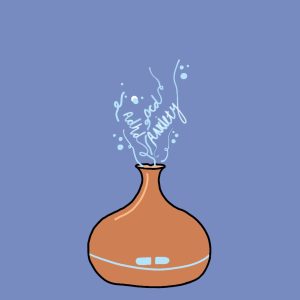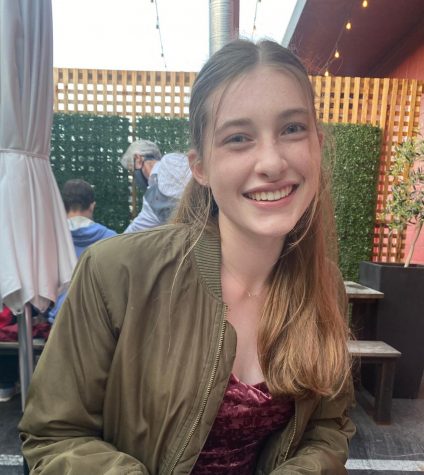There is a good chance that either you or someone you know sees a therapist on a regular basis; maybe you have heard about their experiences or maybe you have had some of your own. According to the November Bark survey, 43 percent of students know someone who is going or has gone to therapy, and 44 percent of students have gone to or currently go to therapy themselves. These numbers demonstrate how widespread therapy is at both Redwood, and in Marin County as a whole. But what is it about Marin that has caused this trend to occur?
David Hagan, a counselor at Redwood’s Wellness Center, has been working on campus for the past two years. The Wellness Center provides free mental health services for students, including social and emotional counseling, either through one-on-one therapy or group sessions.
“I think for teens, [therapy] gives them a safe and non-judgmental space to share what’s going on in their lives,” Hagan said. “It’s a place where, I would hope, teens can feel comfortable sharing the most authentic parts of themselves.”
Wellness intern Tina Namakian, who began working at Redwood this year, also emphasizes the benefits of therapy as a means of managing mental illnesses.

“Therapy can be helpful for some students to build up their toolkit [of skills to cope with mental health issues], whether that’s mindfulness, social skills, relationship skills [or] self-care,” Namakian said. “I think the voluntary nature of [therapy] helps a lot because it doesn’t feel like we’re forcing anyone to come to therapy. We’re working for the kids. We’re working to bring whatever works best for them.”
Senior Caroline Reidy began going to therapy in third grade as an emotional outlet recommended by her mom. In the past, she has worked with several different therapists, but for the last three and a half years, Reidy has been meeting consistently with the same therapist to help manage her anxiety, depression and Attention Deficit Hyperactivity Disorder. Reidy promotes therapy for other students, considering the advantageous effects it has had for her.
“Even if you’re someone who has everything under control [and] it feels like you don’t need a therapist, I think it can [still] be really beneficial to speak to someone even for a short period of time,” Reidy said.
Reidy claims that likely over half of her friends go to therapy. Additionally, according to a 2005 study by the University of California Berkeley, 14.8 percent of adults in Marin reported seeing a mental health specialist in the past year, which is close to double the 7.6 percent statewide. The results of the recent November Bark survey show that the patterns presented likely still exist and span across multiple age groups.
Therapy is not only common, it is also a growing trend. COVID-19 has increased the demand for therapy on a national scale. A Center for Disease Control and Prevention (CDC) report found that from August 2020 to February 2021, the number of adults experiencing symptoms of anxiety or depression increased from 36.4 percent to 41.5 percent. This shift was even more dramatic for ages 18 to 29 with an increase from 49 percent to 57 percent. According to local Marriage and Family Therapist Hannah Gottsegen, children and teens nationwide experienced more issues with mental health during the pandemic, such as anxiety and depression, due to online school and the resulting lack of social connection.
“I don’t think [the increase in therapy is] a Marin thing. I think it’s from the pandemic,” Gottsegen said. “I know that mental health issues and the need for therapy have become a national crisis.”
However, this increase in mental health issues has brought some positive consequences in regards to people’s acceptance of it. Today, it seems that people are less hesitant to reach out for help than in the past.
“It depends on the student, but in general, I think the stigma around seeking mental health help is kind of going away. A lot more people were struggling with their mental health during COVID-19 and it became normalized to seek services that assist with that,” Hagan said.
Reidy has also noticed this shift in others’ attitudes toward acknowledging mental health, specifically at Redwood.
“In my four years at Redwood, the stigma around mental health has gone away a little bit. It is still most definitely there, but I see a lot of teachers really respecting students [who are] prioritizing their mental health. COVID has made mental health awareness so prevalent. That is one thing I’m grateful for coming out of this pandemic,” Reidy said.

In fact, so many people have been searching for help with their mental health that according to Gottsegen, there are month-long waiting lists for treatment centers in Marin, and therapists’ offices are overflowing. Out of all of California’s counties, Marin has the highest ratio per 100,000 of psychiatrists, psychologists, licensed clinical social workers (LSCWs), marriage and family therapists (MFTs) and physicians (MDs). The same University of California Berkeley study found that per 100,000 people, Marin has 63 psychiatrists, 146 psychologists, 119 LSCWs, 342 MFTs and 460 MDs as of 2005. By comparison, in an average statewide ratio, those numbers are 14, 33, 40, 69 and 206 respectively. Given the number of mental health workers in Marin, the lack of openings in therapists’ offices suggests that the number of people seeking out therapy is extremely high.
Considering the disproportionate availability of services in Marin County, the conversation now shifts to beg the question: are mental health issues actually worse in Marin, or is there simply more access to help, and therefore, more diagnosis? According to Gottsegen, it may be the latter.
“People are getting help more [in Marin]. Maybe in places where people don’t reach out for help, they don’t get that diagnosis. I don’t think there’s more mental illness [in Marin] per se. I think [there are] just more people getting help and probably more diagnosis is happening,” Gottsegen said.
This idea that more people have access to mental health services relates to another variable of the therapy equation in Marin: affluence.
It is no surprise that Marin County is a wealthy area. According to the U.S. Census Bureau, from 2015 to 2019 median household income in Marin County was $115,246. By comparison, it was $75,235 in California as a whole and $62,843 in the U.S. There are clearly many mental health professionals in Marin, and they have work because people can afford to see them. Private therapy is expensive. While insurance does often cover some of the cost, out-of-pocket fees are also often required. In Marin, more people have expendable incomes than in other parts of California or in the nation. This allows people to afford therapy even if their insurance does not fully cover it.
As a result of readily accessible therapy in Marin, Hagan finds that stigmatization of mental health is lowered.
“I think we are in a county where seeking therapy has maybe become a little bit more normalized. I don’t know if it’s like that when you go to less wealthy areas,” Hagan said.
However, this affluence is a double-edged sword as it may be part of the reason that Marin residents suffer from poor mental health.
“I think there’s a family pressure that a lot of kids feel. You have a lot of parents in this area that are working professionals, and I think a lot of kids feel pressured to live up to [those] expectations of achievement,” Hagan said. “That can absolutely contribute to anxiety.”
Reidy also sees how the atmosphere of Marin County leads to pressure to perform well and be successful in all aspects of life.

“It’s definitely possible that stress is higher [in Marin] to get into that good college that your parents had [gone to] and live how you’re living now, even though we live in [a very wealthy area] and to maintain that is ridiculous. Having that as an expectation can cause a lot of stress,” Reidy said.
In order to manage the stress of Marin County, whether it is socially, academically or monetarily driven, there are some ways around the expenses of private therapy, making it more equitable for those who could not otherwise afford a therapist. There are hotlines, lower fee counseling centers and the Wellness Center at Redwood, but Namakian hopes to see more options in the future.
“I would love to see free mental health services [become] even more prominent outside of schools or in all the schools. I know that [the Tamalpais Union High School] district is really good at keeping up with that and meeting the needs of students, but I just hope to see this in other parts of Marin County or in other schools too,” Namakian said.
Reidy pushes people to take advantage of the Wellness Center’s free therapy and to seek out help if they want it but also emphasizes that individuals are the ones who control their progress.
“In therapy, it’s all self-motivated. You have your therapist guiding you through what you need to do, and it’s an incredible, helpful resource, but in the end, it’s about your willingness to put what you can into therapy, and that’s what you get out,” Reidy said. “It’s never going to be a linear battle. But overall, the general trend is finding a lot more joy in little things.”
Students can visit the Redwood Wellness Center for free mental health services in room 103. For more resources, there is the California Youth Crisis Line (1-800-843-5200), Marin Suicide Prevention & Crisis Hotline (415-499-1100) and the Marin Psychiatric Emergency Services hotline (415-473-6666). Remember, you are not alone and there is always help available.











